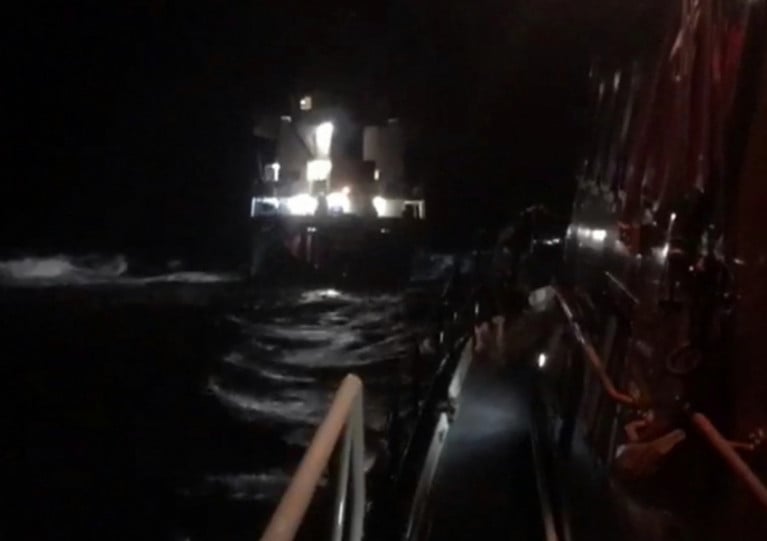Displaying items by tag: Portree
Eight Crew Airlifted From Cargo Ship Aground Off Skye
Eight crew were rescued from a cargo ship out of Drogheda that ran aground off the Isle of Skye in Scotland’s Inner Hebrides early yesterday morning (Monday 23 March).
The MV Kaami had left Drogheda Port on the evening of Saturday 21 March and was due to arrive in Slite, Sweden this weekend.
But the 90m cargo vessel ran aground in The Minch at what’s known locally as Eugenie Rock, about six nautical miles north-west of Duntulm on Skye.
Portree RNLI’s lifeboat was launched at 2.24am yesterday morning in response to a MayDay call from the MV Kaami, as did the Emergency Towing Vessel Ievoli Black and the Pharos, a Northern Lighthouse Board buoy-laying vessel.
The duty Stornoway Coastguard rescue helicopter arrived on scene, where weather conditions has a Force 8 southerly wind with a rough sea state, and began to airlift eight of the Russian crew to Stornoway. No injuries were reported.
Portree & Kyle Of Lochalsh Lifeboats Receive Generous Donations
Two very generous cheques was presented from supporters of Portree and Kyle of Lochalsh lifeboat stations in western Scotland last Friday 17 January.
Mr Rodger Harvey-Jamieson made the very generous donation of £10,000 cheque from his family to each station when he visited Kyle of Lochalsh RNLI.
Mr Alfie Edwards, representing the Applecross Boat Pull Team, also handed over to each station a cheque for £1,000. The team have been fundraising for local charities and the RNLI for several years.
Thanking Mr Harvey-Jamieson and Mr Edwards were Portree coxswain Hamish Corrigall and operations manager John Ellis, as well as Emma Noble and Daniel Elliot representing Kyle station.































































